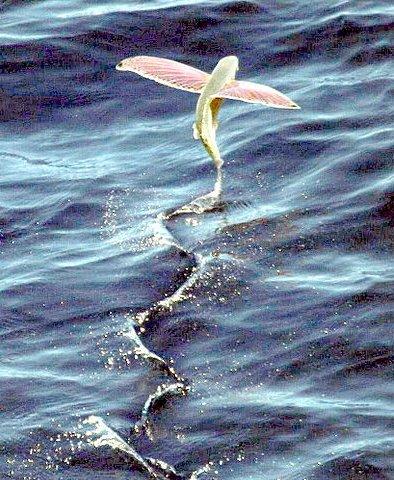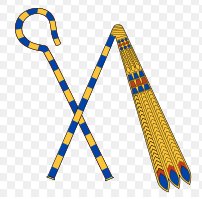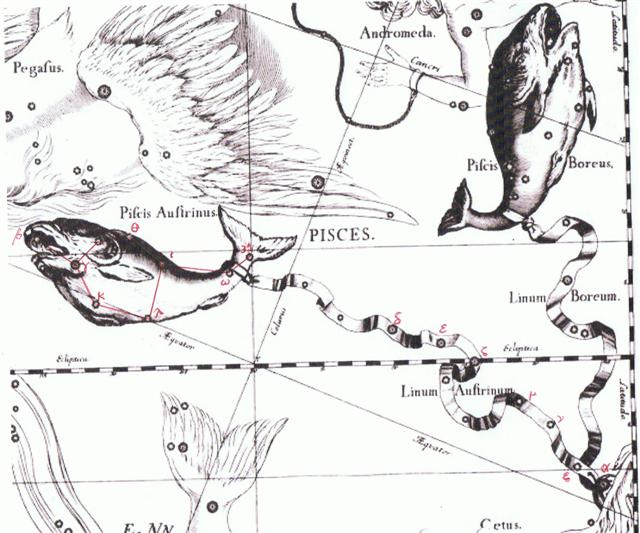The peculiar 'fish
bird' in 'February 14 (45) could
possibly
return again without change (X * Y = X)
368 days later in 'February 17 (413 = 7
* 59 = 368 + 45). Rather than only 3
days later:
 |
 |
 |
 |
 |
|
Gb2-32 |
Gb2-33 |
Gb2-34 (60) |
Gb2-35 |
Gb3-1 (291) |
|
JANUARY 2 |
3 |
4 |
5 (370) |
6 |
|
Simmah (351.7) |
φ Aquarii (352.0), ψ Aquarii
(352.4), χ Aquarii (352.6), γ
Tucanae, φ Gruis (352.8) |
ο Cephei (353.3),
Kerb
(353.6) |
κ Piscium (354.2), θ Piscium
(354.4),
υ Pegasi
(354.9) |
ο Gruis, Snowball Nebula (355.0) |
|
March
7 |
8 (432) |
9 (68) |
10 |
11 |
|
'February
8 |
9 (40) |
10 |
11 |
12 (408) |
|
"January
25 |
26 |
27 (392) |
28 |
29 (*314) |
|
NAKSHATRA DATES: |
|
JULY
4 |
5 (186) |
6 |
7 |
8 |
|
Al Zubrah-9
/
Purva Phalguni-11 |
φ
Leonis (170.0), Alula (170.5),
Labrum (170.6) |
σ
Leonis (171.1), λ Crateris
(171.6), ι Leonis, ε Crateris
(171.9) |
γ
Crateris, π Centauri (172.0), κ
Crateris (172.5), τ Leonis
(172.8)
Gredi
|
ο╣ Centauri (173.8) |
|
Zosma
(169.2),
COXA (169.4) |
|
September 6 |
7 (250) |
8 |
9 |
10 |
|
'August
10 (222) |
11 |
12 (*144) |
13 |
14 |
|
"July 27 |
28 |
29 (210) |
30 |
31 |
 |
 |
 |
 |
 |
|
Gb3-2 |
Gb3-3 (64) |
Gb3-4 |
Gb3-5 (295) |
Gb3-6 |
|
JANUARY
7 |
8 |
9 |
10 (375) |
11 |
|
no star listed (356) |
ι Phoenicis (357.3), ι Piscium
(357.4), λ Andromedae (357.9) |
λ Piscium (358.0),
Manus Catenata
(358.1), Alrai, θ Phoenicis
(358.4), κ Andromedae (358.7) |
ω Aquarii
(359.2) |
ψ Andromedae (360.1), σ
Phoenicis (360.4) |
|
March
12 |
13 (72) |
π |
15 |
16 (440) |
|
'February
13 |
2-14 (45) |
15 (*331) |
16 |
17 (413) |
|
"January
30 |
31 |
"February 1 |
2 (33) |
3 (399) |
|
NAKSHATRA DATES: |
|
JULY
9 |
10 (*111) |
11 |
12 (193) |
13 |
|
ξ
Hydrae (174.3), ο▓ Centauri, λ
Centauri (174.8) |
θ
Crateris (175.0), υ Leonis
(175.2), ω Virginis (175.3), ι
Crateris (175.5) |
ο
Hydrae (176.1) |
ζ
Crateris, ξ Virginis (177.0), λ
Muscae (177.1), ν Virginis
(177.2), μ Muscae (177.8) |
Al Sarfah-10 /
Uttara Phalguni-12 /
Zibbat A.-17 |
|
93 Leonis
(178.0),
DENEBOLA (178.3), Alaraph
(178.6) |
|
September
11 |
12 (*175) |
13 (256) |
14 |
15 |
|
'August
15 |
16 (*148) |
17 (229) |
18 |
19 |
|
"August
1 |
2 (214) |
3 (*135) |
4 |
5 |
Someone completely
immersed in water cannot be seen and
therefore cannot be counted. These
'fish-birds' have no light in front
- both their front wings and their front
tails are drawn down, protecting
from light in the east. Heliacal
Manus catenata (the chained hand
of Andromeda) was at takaure
in the
π day. Its Greek letter was ι and
according to Hevelius it was to the left of
her right thumb, in a group of 3 stars, the other being κ
and λ. Why did he avoid a
contact between her right hand and
Manus Catenata? Her thumb was at κ
and her forefinger at λ.

The star at the end
of the chain, encircled by a ring,
was adequately enough
ο, and
at the time of the Hyades Gate it
was day 364 and at glyph Gb2-29,
obviously meant to be Signs:
 |
 |
 |
 |
 |
|
Gb2-27 |
Gb2-28 (54) |
Gb2-29 |
Gb2-30 (285) |
Gb2-31 |
|
DECEMBER
28 |
29 |
30 (364) |
31 |
JANUARY 1 |
|
ι Cephei (346.0), λ Aquarii, γ
Piscis Austrini, σ Pegasi (346.5) |
Scheat Aquarii (347.0), ρ Pegasi
(347.2), δ Piscis Austrini
(347.4),
Fomalhaut,
τ Gruis (347.8) |
Fum al Samakah
(348.3), ζ Gruis (348.5),
ο Andromedae
(348.9) |
Al Fargh al Mukdim-24 /
Purva Bhādrapadā-26 /
House-13 |
23h (350.0) |
|
Scheat
Pegasi,
π Piscis Austrini (349.3), κ
Gruis (349.4),
MARKAB
PEGASI
(349.5) |
υ, θ Gruis (350.0), π Cephei
(350.6), ι Gruis (350.9) |
|
March 2 |
3 |
4
(428) |
5 (64) |
6 |
|
'February
3 |
4
(400) |
5 (36) |
6 |
7 |
|
"January
20 |
21 |
22 |
23 (388) |
24 |
|
NAKSHATRA DATES: |
|
JUNE
29 |
30 |
JULY 1 (182) |
2 |
3 |
|
no star listed (164)
Altair |
Wings-27 |
ANA-TIPU |
11h (167.4) |
Al Sharas (168.6) |
|
ALKES
(165.6) |
Merak (166.2),
DUBHE
(166.7) |
χ╣ Hydrae (167.1), χ▓ Hydrae
(167.3) |
|
September 1 |
2 |
3 |
4 |
5 (248) |
|
'August
5 |
6 |
7 |
8 (220) |
9 |
|
7-22 |
23 |
"July 24 |
25 |
26 (207) |
If horses can fly then
it would not be very remarkable if
also fishes could fly (ika rere,
maroro).

...
The origin of the term
Exocoetidae is as follows. The
suffix -idae, common for
indicating a family, has been placed
after the root of the word
exocoetus,
not only the present scientific name
for a genus of flying fish in this
family, but also the general name in
Latin for a flying fish. The Latin
name is a transliteration of the
Ancient Greek name
εξώκοιτος
for the flying fish, literally
'sleeping outside', from
εξω
'outside' and
κοιτος
'bed', 'resting place', so named
since flying fishes were believed to
leave the water to sleep on the
shore ...
... Mgv.:
Maroro,
the flying fish. (Ta.:
marara,
id.) Mq.: maoo,
id. Sa.: malolo,
id. Ma.: maroro,
id. Churchill.
|
Egyptian bread, (-t,
female determinant) |
 |
Phoenician qoph |
 |
Greek
phi |
Φ(φ) |
|
...
is the 21st letter
of the Greek
alphabet ... Its
origin is uncertain
but it may be that
phi originated as
the letter qoppa ...
In traditional Greek
numerals, phi has a
value of 500 or
500000 ...
Isaac
Taylor, History
of the Alphabet:
Semitic Alphabets,
Part 1, 2003:
'The old
explanation, which
has again been
revived by HalÚvy,
is that it denotes
an 'ape,' the
character Q
being taken to
represent an ape
with its tail
hanging down. It may
also be referred to
a Talmudic root
which would signify
an 'aperture' of
some kind, as the
'eye of a needle,'
... Lenormant adopts
the more usual
explanation that the
word means a 'knot'
...
... The king,
wearing now a short,
stiff archaic
mantle, walks in a
grave and stately
manner to the
sanctuary of the
wolf-god Upwaut,
the 'Opener of the
Way', where he
anoints the sacred
standard and,
preceded by this,
marches to the
palace chapel, into
which he disappears.
A period of time
elapses during which
the pharaoh is no
longer manifest.

When he reappears he
is clothed as in the
Narmer palette,
wearing the kilt
with Hathor
belt and bull's tail
attatched. In his
right hand he holds
the flail scepter
and in his left,
instead of the usual
crook of the Good
Shepherd, an object
resembling a small
scroll, called the
Will, the House
Document, or Secret
of the Two Partners,
which he exhibits in
triumph, proclaiming
to all in attendance
that it was given
him by his dead
father Osiris,
in the presence of
the earth-god Geb.
'I have run', he
cries, 'holding the
Secret of the Two
Partners, the Will
that my father has
given me before
Geb. I have
passed through the
land and touched the
four sides of it. I
traverse it as I
desire.' ... |
|
Egyptian flail |
 |
Phoenician lamed |
 |
Greek
psi |
Ψ (ψ) |
|
Wikipedia: In writing,
the early letter appears
in an angular shape ( ).
There were early
graphical variants that
omitted the stem,
'chickenfoot-shaped
psi', as: ).
There were early
graphical variants that
omitted the stem,
'chickenfoot-shaped
psi', as:
 or
or

In later
research it was
postulated that the
[Phoenician] alphabet is
actually two complete
lists, the first dealing
with land agriculture
and activity, and the
second dealing with
water, sea and fishing.
The first
half beginning with
Alef - an ox, and
ending with Lamed
- a whip. The second
list begins with Mem
- water, and continues
with Nun - fish,
Samek - fish
bones, Ayin - a
water spring, Peh
- the mouth of a well,
Tsadi - to fish,
Kof, Resh
and Shin are the
hook hole, hook head and
hook teeth, known to
exist from prehistoric
times, and the Tav
is the mark used to
count the fish caught.
The Crook
and Flail were
instruments of the
Pharaoh:
 |
Dzaneb (the
tail?) is
ω Piscium and at another ring,
30 days after the ring of ο Andromedae:

|










